Consumer Products Industry Report
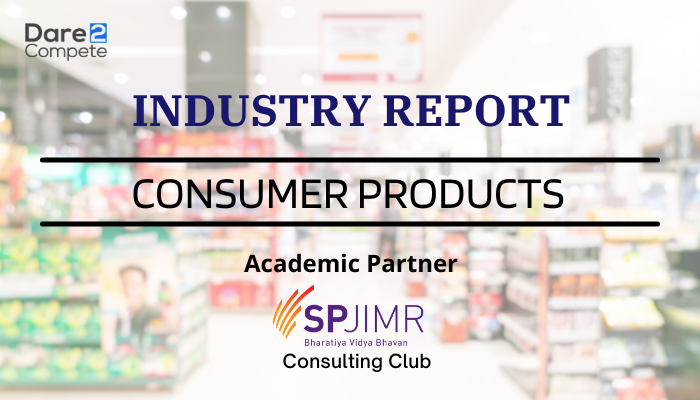
Market Trends
- Consumer durables & non-durables account for about 50% of household consumption
- Consumer durables expected to reach US$ 21.18 Bn by 2025
- Internet retail is on the rise. By 2018, about 2.9% of the total retail value of goods sold in India was transacted over the internet. IBEF estimates this proportion will grow to 5% in the coming years.
- Fast Moving Consumer Goods Sector
- 4th largest sector in the Indian economy
- Expected to grow at a rate of CAGR 23.15% to reach US$ 103.70 bn by FY21
- Favourable demographics and rise in income level – boosting the market
- Urban Segment – 55% of revenue generation, largest
- contributor to the overall revenue
- The FMCG sector grew by 10.6% in rural areas owing to government initiatives that boosted demand.
Key Performance Indicators in this segment –
- Out of Stock Rate –Measures the ability to meet customer demand
- Cash-to-cash cycle time - Analyzes the cash cycle time in detail
- Carrying cost of inventory - Assesses the costs of the inventory
- holds
- Margin by product category –Identifies the most profitable products
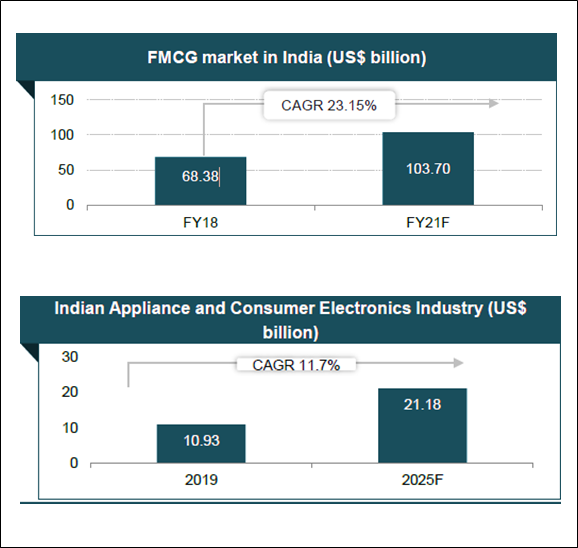
Major Players
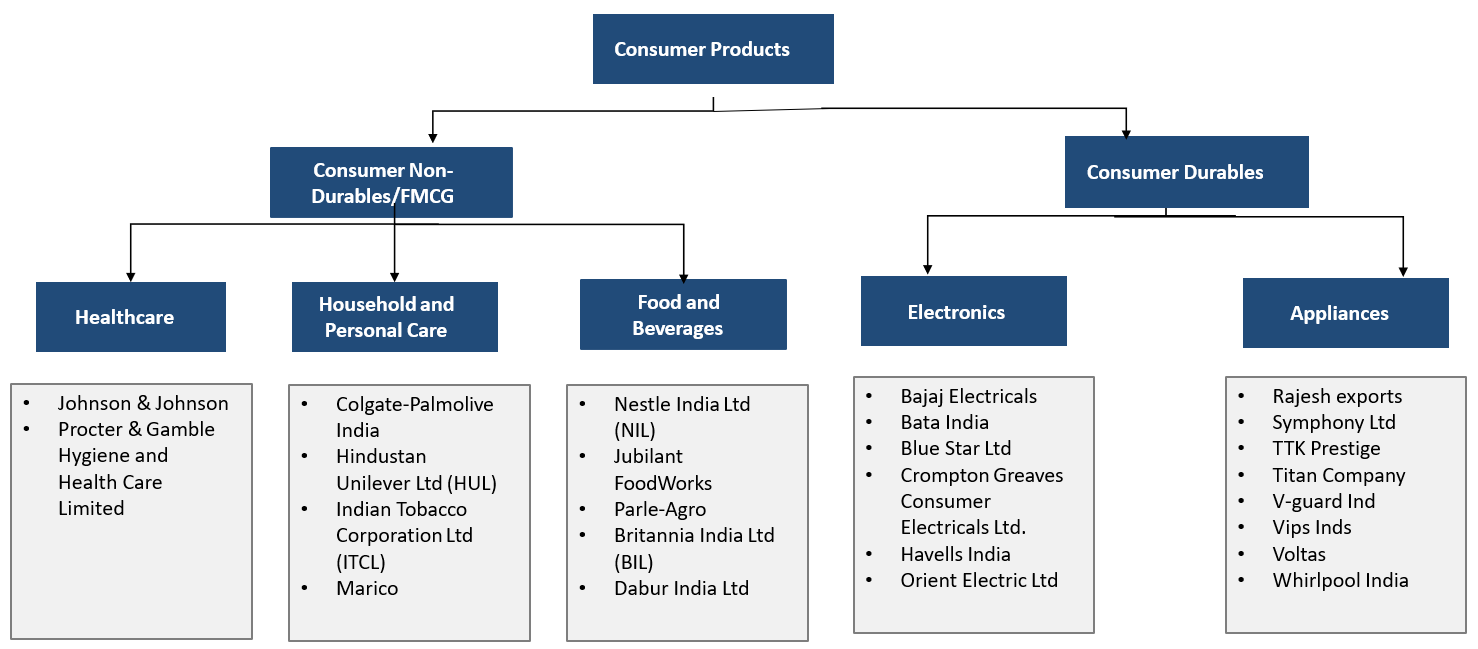
Facts & Figures
Some fascinating statistics of the Consumer Product industry:
The market size of FMCG in India is increasing continuously with a value of USD 110 Bn in 2020 and is expected to reach USD 220 Bn in 2025.
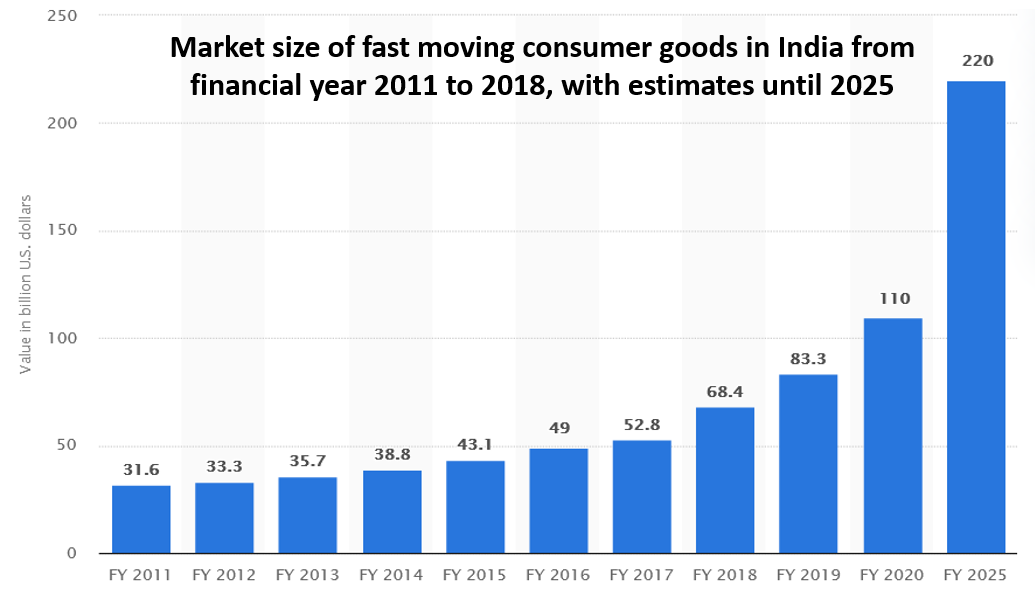
The year 2020 has witnessed revenue of USD 103.7 Bn in the consumer goods segment experiencing a huge growth with an increase in per capita income.
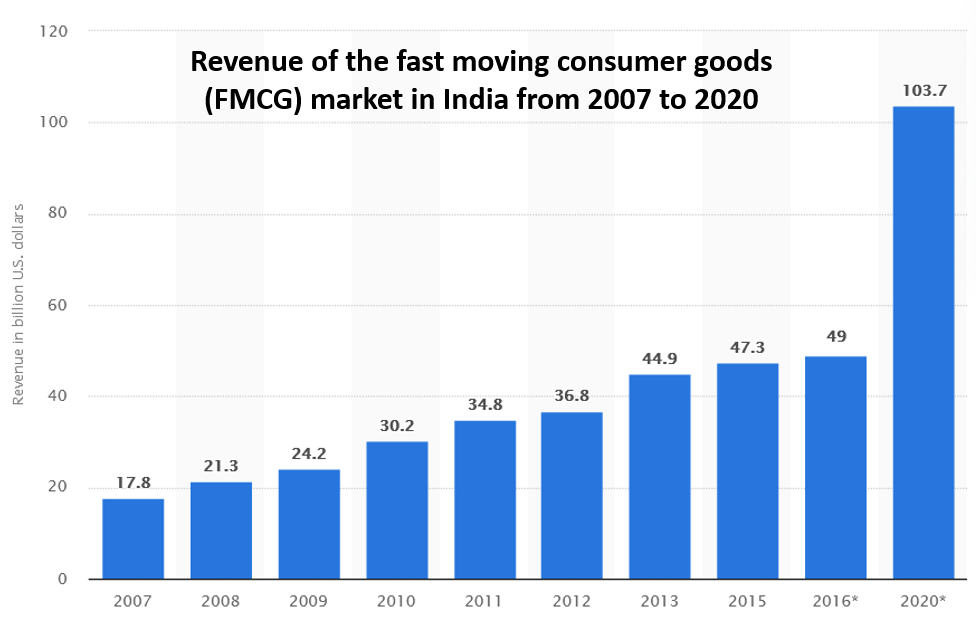
The skincare and cosmetics category has seen the largest share of people spending less than 5,000 rupees in 2020. On the other hand, 34% of people spent more than 5,000 rupees on Furniture and Electronics.
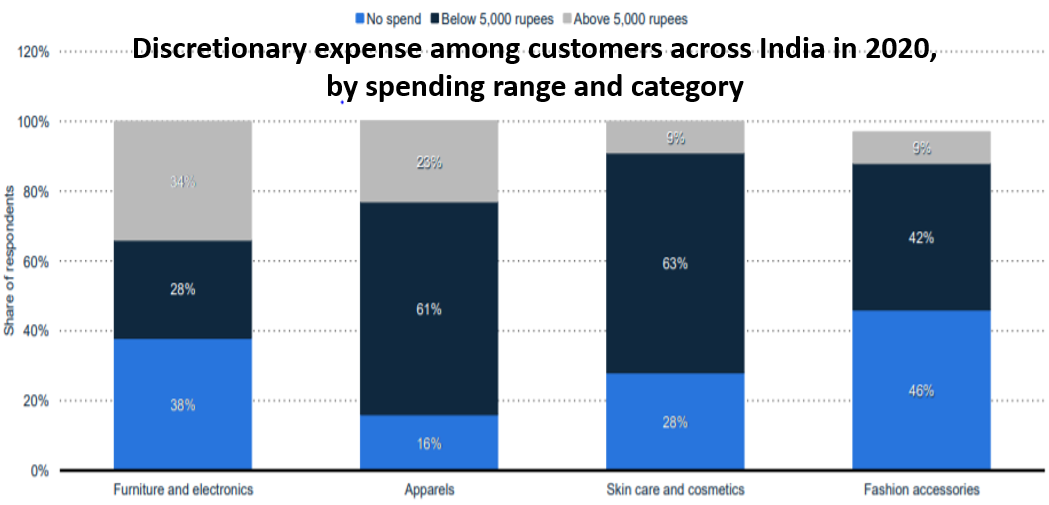
Source: Statista
Broad Competitive focus
Millennials constitute 34% of India’s total population offering tremendous growth potential for markets.
QCDF analysis of customers preferences in the consumer products segment is given below hierarchically:
- Convenience/Delivery (D)– As per Deloitte reports, convenience is an important consideration for millennials on account of their hectic lifestyle. The dearth of time is one of the key reasons for the growth in online shopping and growth in ‘ready to eat’ at the rate of over 28 % p.a. over the last 5 years. As per BCG reports, Convenience on the rise with time compression, expectation to access whenever and wherever: 57% use time-saving products or services
- Personalization/Flexibility(F)– Millennials aim at differentiating themselves and relating to brands in their own ways aesthetically rather than simply functionally, and hence prefer personalized product and service categories. As per BCG reports, 56% seek individualization choices and opt for personalization even at an added cost.
- Value/Quality (Q)– Post the coronavirus pandemic, customers have begun to pay more attention to hygiene and health and place those as considerations of paramount importance before making a purchase decision.
- Cost (C) – Customers in India are price sensitive and are attracted by discounts and offers. Although, fair price is no longer the final differentiator and does not drive consumer loyalty and customers are willing to pay for better quality and brand loyalty.
Porter’s Five Forces Analysis
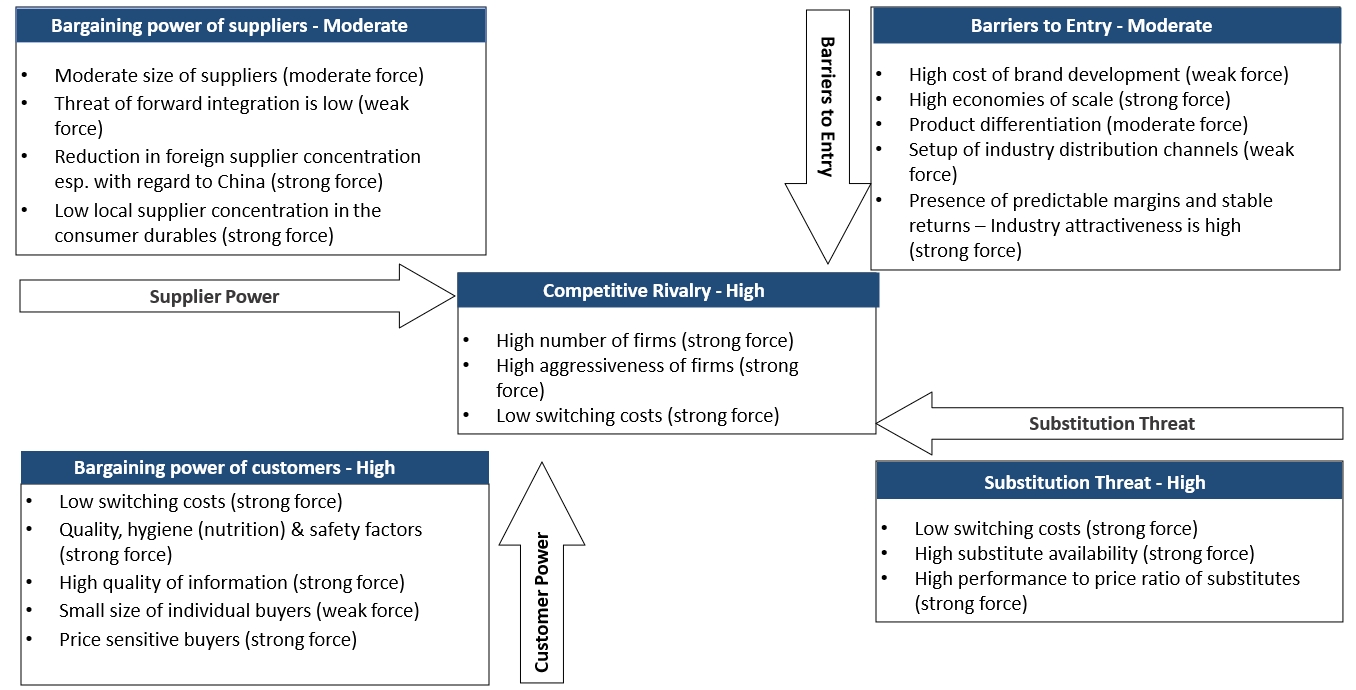
Current Trends
- Brands embracing slow living – A recent trend has arisen wherein people spend time on YouTube looking at videos of people observing small, insignificant things like the movement of a washing machine, a steaming cooker, or a kettle. Thus, slow living is when things that people would normally consider the boring gain significance in their lives. This has been an effect of the pandemic when people began to work at home while also managing personal commitments. Startups dealing in interior décor and horticulture have used this extensively in marketing.
- Increasing Focus on Rural areas – FMCG witnessed 10.6% growth in rural India in Q3 2020 as a result of government initiatives, better-than-normal agricultural harvests, reverse migration due to the coronavirus lockdown, and dropping unemployment rates. “According to Kantar Worldpane, FMCG sector in India is expected to report a 4-5% volume growth in FY21, driven by rural areas that are expected to grow two percentage points ahead of the urban regions that are hit harder by COVID-19 pandemic.”
- Sustainability gaining prominence – Recently, Coca-Cola has begun the trial of a novel initiative: using a paper bottle made from a single piece of paper fiber. Beer company Carlsberg and Absolut, the vodka maker, have also begun the prototyping of paper bottles. This is the result of a competitive push among leading companies to embrace planet-friendly initiatives with NGOs and charity organizations naming and shaming polluters and governments emphasizing on sustainability.
- Brand Consciousness and Personalization – Customers nowadays pay close attention to the brands they buy and have begun to develop an increasingly close relationship with brands in terms of seeing what’s in it for them apart from associating themselves with it. Also, customers are intrigued and eager to experiment when it comes to personalization. FMCGs overwhelmingly favor this though it adds to their costs since this is also a good source of insights into customer behavior.
- Growth of Omnichannel Shopping – The general trend in the population has shifted towards omnichannel shopping (66%) with only 32% shopping offline post the pandemic. Consumers view online shopping to be more than a simple delivery mechanism: they look for the best deals online and decide whether they should leave their homes to get the products at shops
- Going Local – A notable trend among consumers these days is their preference to go local, fueled by government initiatives such as Make in India and Atma Nirbhar Bharat. With the onset of the pandemic, consumer mindset has shifted to eating what grows in the home country which is suited to their climate and eating habits rather than importing food.
Emerging Trends
Technology and Innovation
Blockchain, AI, Digital Reality and Cloud technologies integrated together to create powerful solutions in the consumer product market. It also helps businesses to improve efficiency and safety—leading to increased profitability—while enhancing the customer experience.
- Extended Reality – Mixed Reality scenarios in which consumers interact with physical elements and digital representations at the same time are being leveraged to create a unique customer experience. VR and MR stores provide immersive digital experiences. E.g. LEGO using Snapchat
- Blockchain – Users prefer a new era of transparency for consumer products companies and consumers alike, especially regarding tracking and monitoring of products and the flow of information, services, and money. Advantages - improved traceability and visibility, efficient product recall, immutable and genuine financial transaction
- Artificial Intelligent Technologies - AI-based product and service innovations, and augmented decision-making. Consumers can reap the rewards of personalized products, online product recommendations, and timely service. Advantages - Decision-making based on big- data, real-time asset tracking, or product authentication. Improved customer experience and brand-engagement
- Digital Reality - Digital reality to create effective marketing and advertising, drive innovation, improve employee effectiveness, increase efficiency, as well as create three-dimensional and interactive product visualizations. In addition to virtually experiencing products, consumers can explore product personalization and access details supporting product transparency to make informed food choices. Advantages - Enhanced product transparency and personalized suggestions
- Cloud Technologies - Helps create an enabling environment for the smooth execution of the other disruptive technologies. For consumers, the cloud can enable numerous seemingly mundane daily activities, such as using email, online shopping, browsing the internet, and so on, in a seamless, pervasive way. Together, these can result in uninterrupted experiences and better company-consumer engagement—a win-win situation. Advantages - Seamless access to online shopping
Login to continue reading
And access exclusive content, personalized recommendations, and career-boosting opportunities.












Comments
Add comment